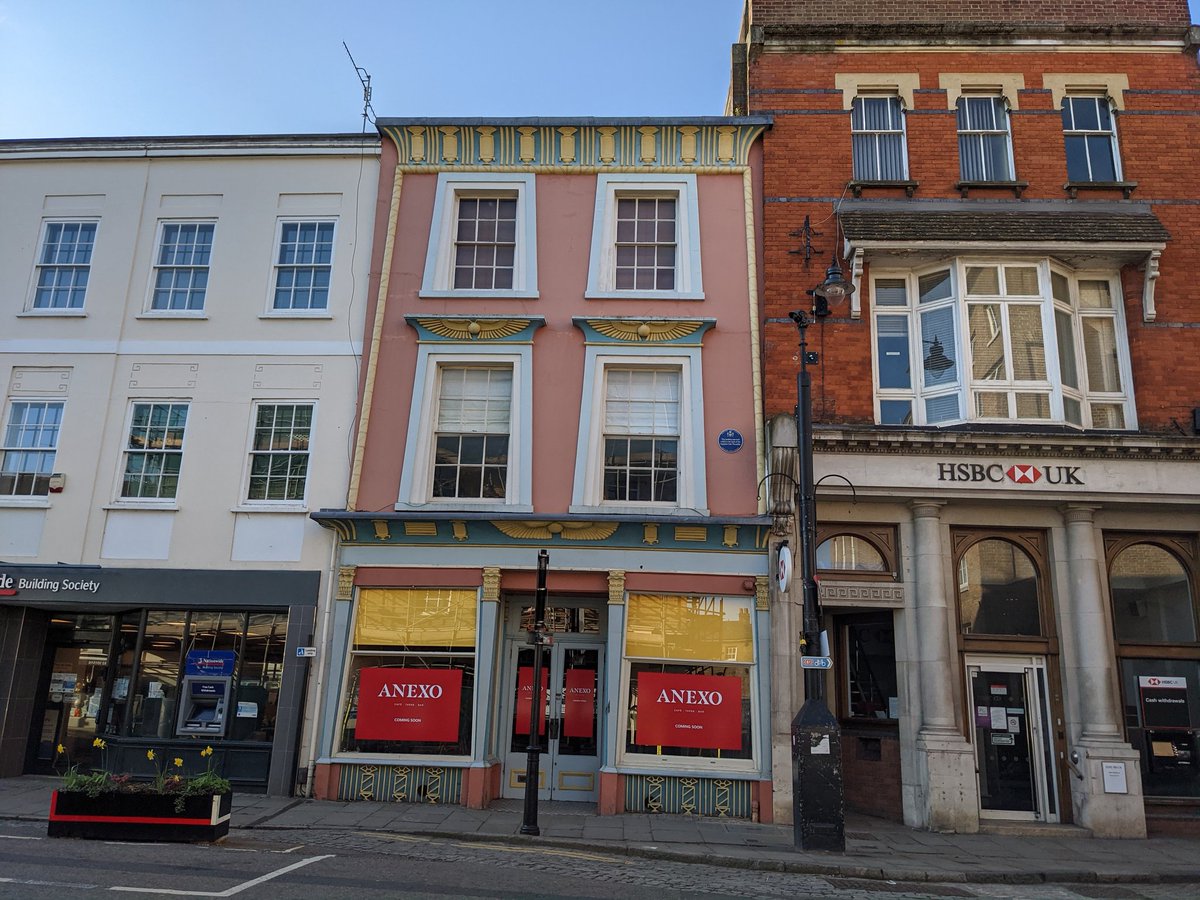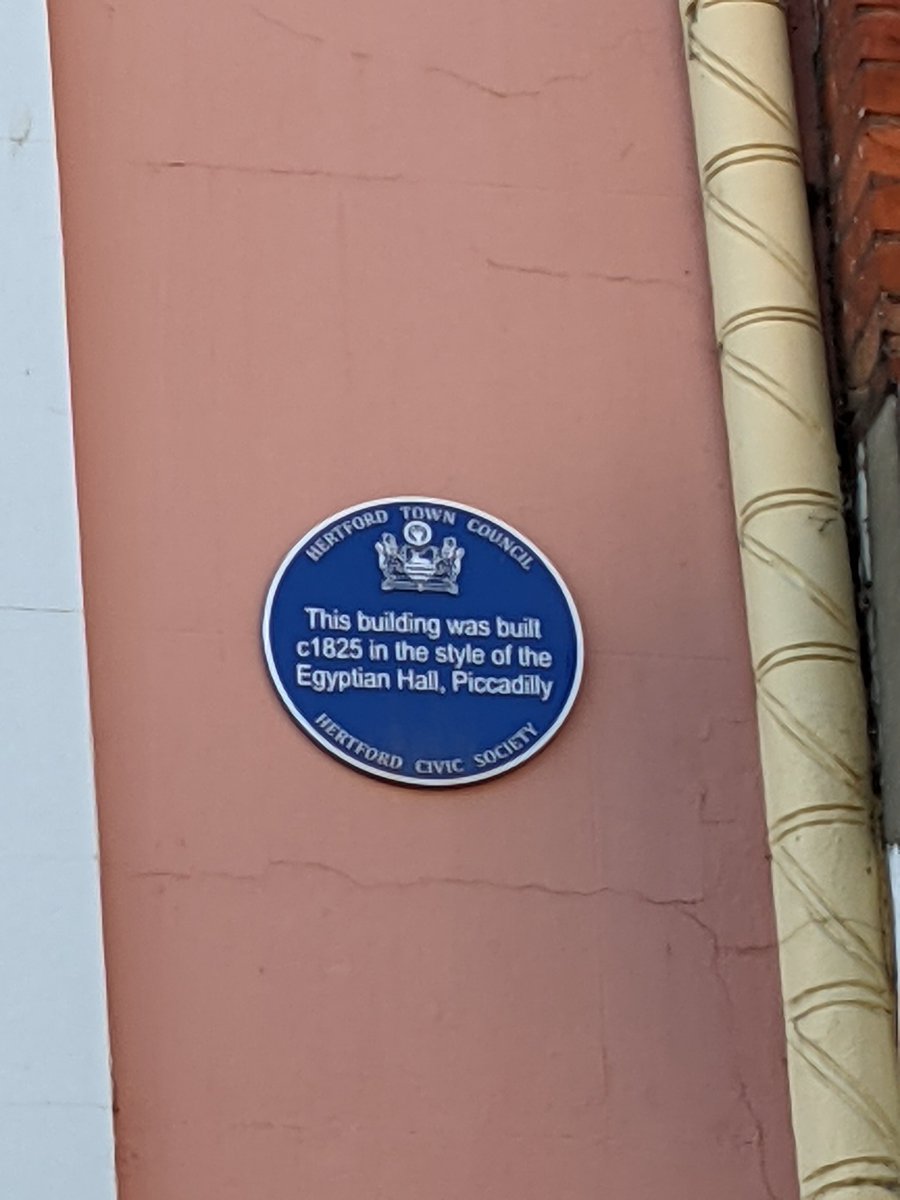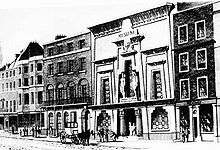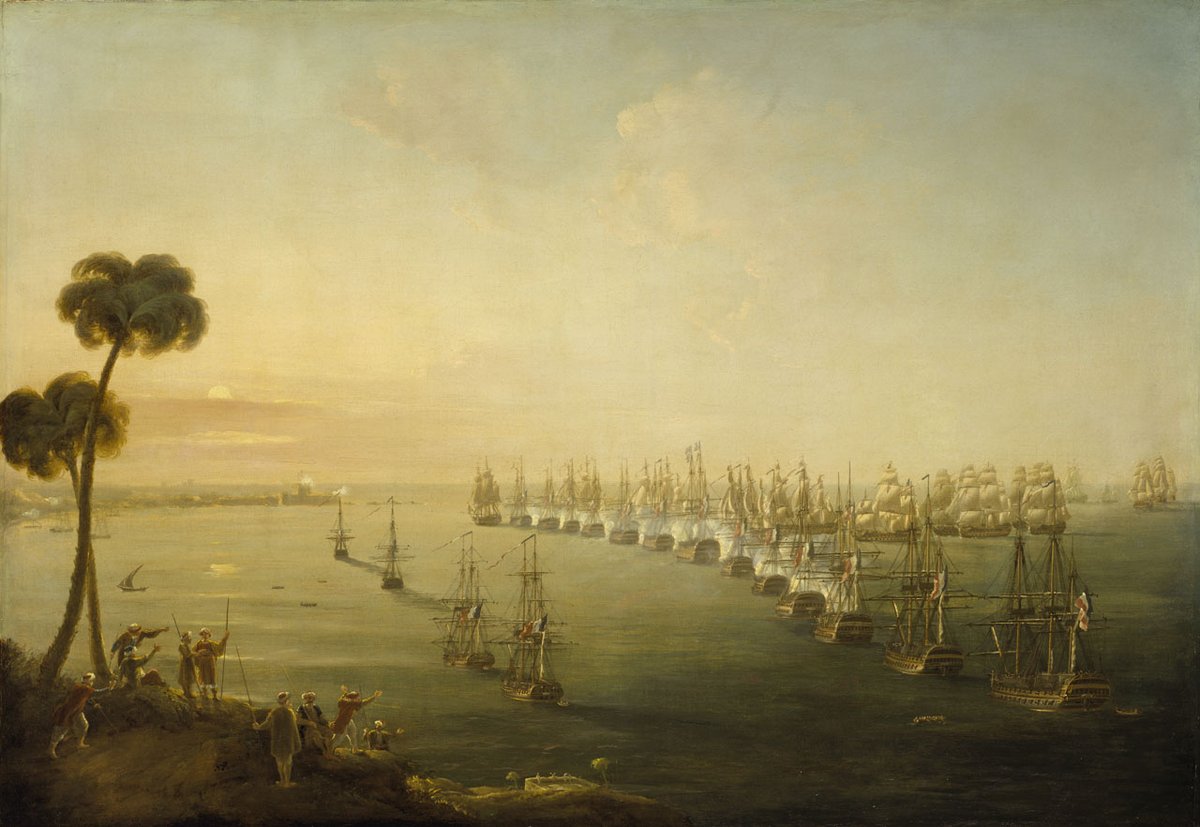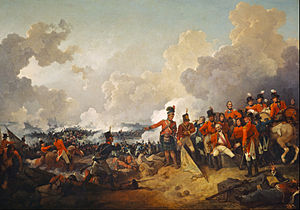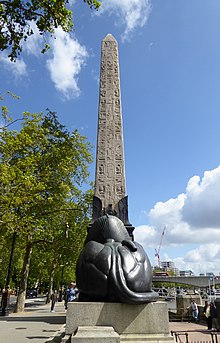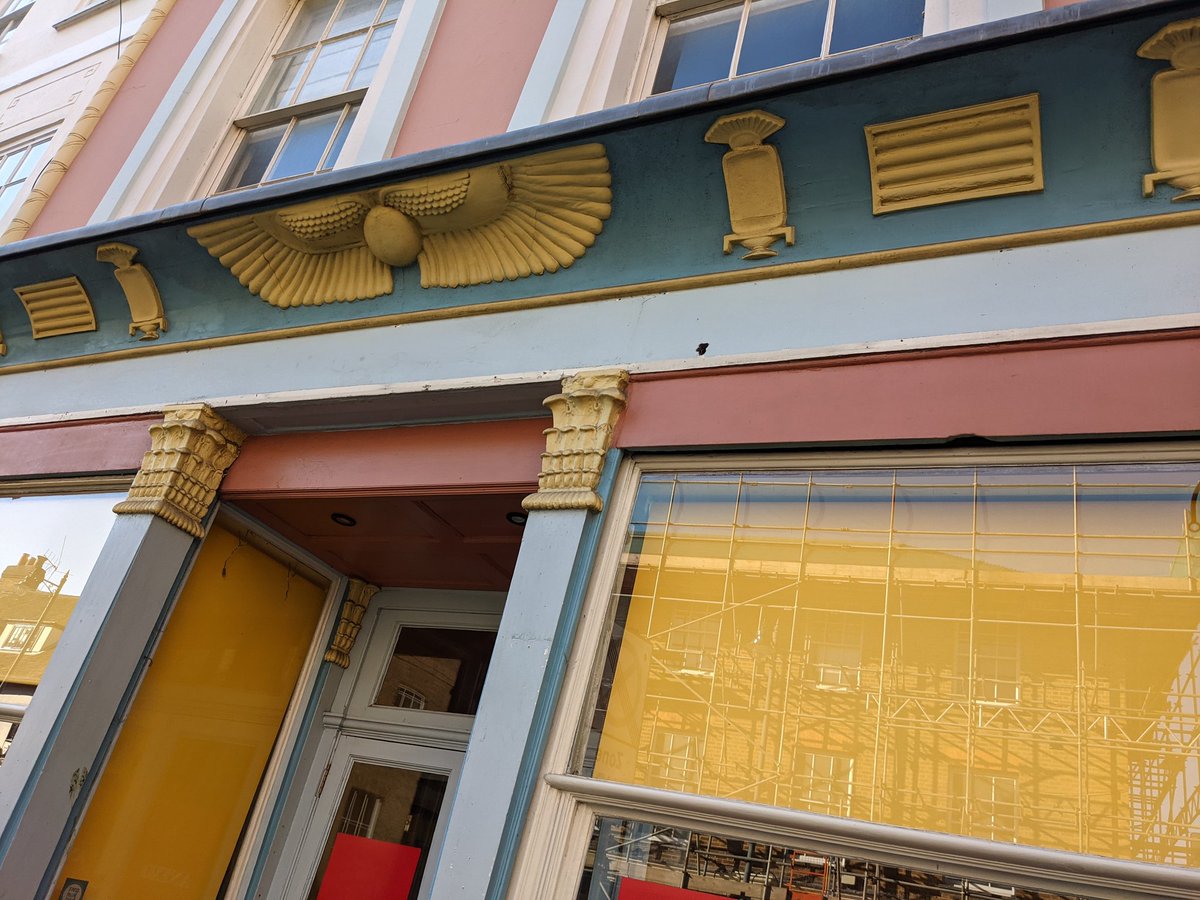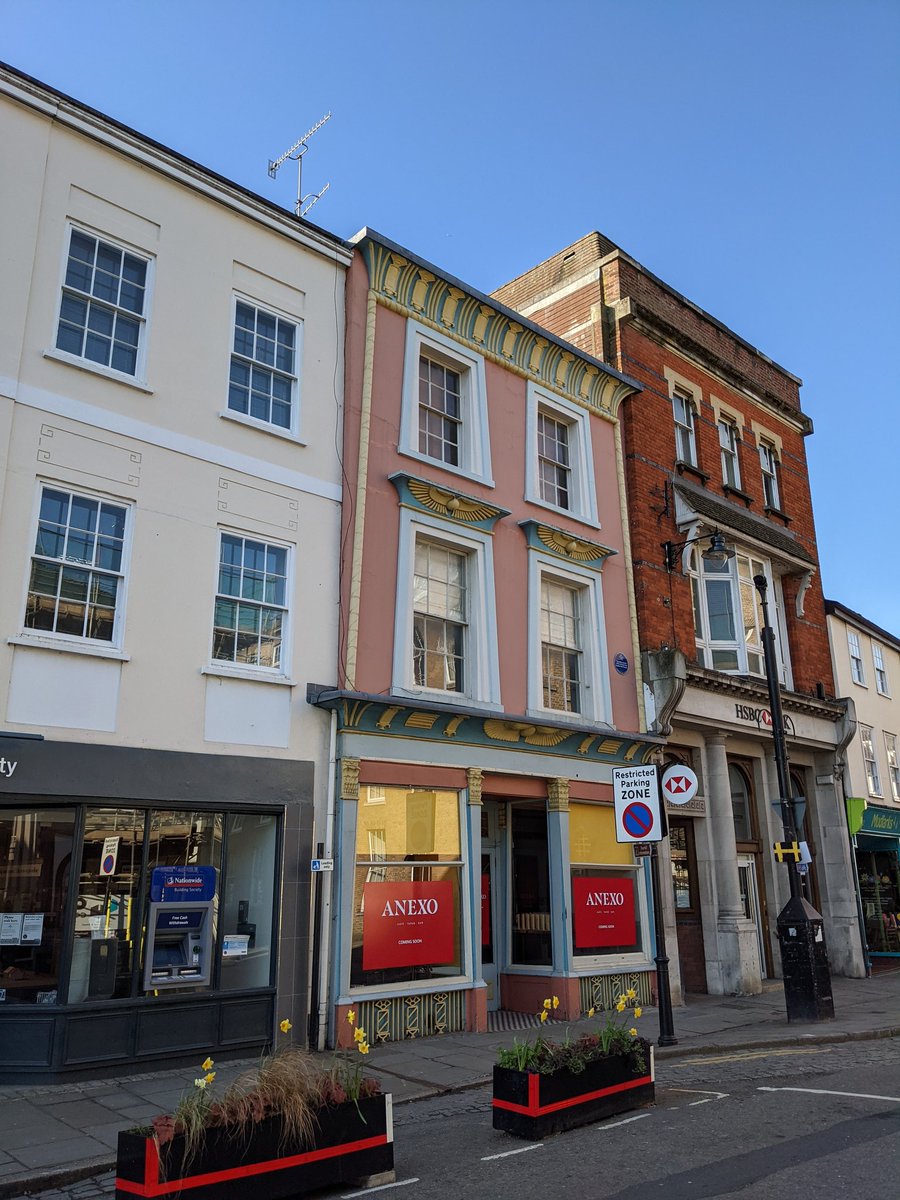I stopped on my run this morning to admire one of my favourite buildings, the Egyptian House in Hertford. But why is it here? What links Napoleon, the British Empire in India, and a tapas bar in a small town? Some more colonial countryside... @ColonialCountr1 @profdanhicks (1/7)
As the blue plaque states, the building was built in 1825 in the style of the Egyptian Hall, Piccadilly, which was itself built in 1812, and sadly demolished in 1905, having played host to the magician John Nevil Maskelyne& #39;s show for 32 years (but that& #39;s another story...) (2/7)
Both are examples of Egyptian Revival architecture, which became popular following Nelson& #39;s victory over the French at the Battle of the Nile in 1798, and the surrender of the French Army at Alexandria in 1801. (Painting by Nicholas Pocock, 1808, National Maritime Museum) (3/7)
Why did Napoleon invade Egypt? Principally to weaken Britain by cutting off its access to India, upon which its wealth - and thus ability to fight him - depended. As such, Egyptian Revival architecture was a statement of national self-confidence following these victories. (4/7)
Why commemorate these victories with a *building style*? We don& #39;t normally... But Napoleon& #39;s invasion of Egypt was explicitly cultural not just military. It was central to the creation of & #39;Orientalism& #39;, as seen in this picture, & #39;Napoleon in the Plague House at Jaffa& #39;, 1804. (5/7)
The Rosetta Stone was one of the cultural artefacts surrendered by the French to the British at Alexandria in 1801, and Cleopatra& #39;s Needle was gifted to Britain by the Ottomans who then took over again... Whether we should still have them both is an interesting question. (6/7)

 Read on Twitter
Read on Twitter